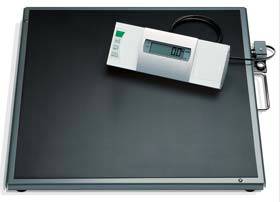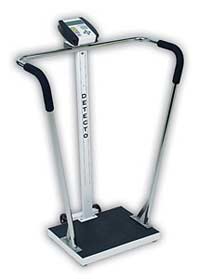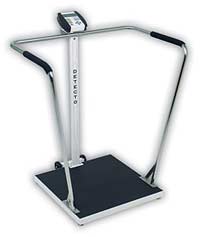Home » Hospital & Durable Medical Equipment » Obesity Reaches Epidemic Proportions in the US » Obesity Reaches Epidemic Proportions in the US
Obesity Reaches Epidemic Proportions in the US

Seca Bariatric Floor Scale w/ Remote Display
Retail Price: $2,200.02
Your Price: $2,100.00
 Unit: single
Unit: single

Digital Bariatric Platfrom Scale w/ Wheels & Handrails
Retail Price: $2,793.38
Your Price: $2,056.71
 Unit: single
Unit: single

Digital Bariatric Platform Scale w/ Handrails
Retail Price: $2,923.88
Your Price: $2,670.96
 Unit: single
Unit: single
Obesity in the United States has reached epidemic proportions in recent years. There are many reasons why this has come about, but in order to curb the epidemic and the damage it causes, it is necessary to understand what obesity is. It’s the first step towards proper treatment and successful rehabilitation.
Obesity is defined as a BMI (body mass index) over 30 kg/m2. People with a BMI between 25 and 29.9 are considered overweight, but not obese. Obesity is the result of an imbalance between food eaten and energy expended, but the underlying cause is quite complex.
There are two general classifications of obesity: exogenous and endogenous. Exogenous obesity is caused by excessive food intake. Endogenous is caused by some abnormality within the body (endocrine or faulty metabolism). Adrenal hyperfunction and testicular and ovarian hypofunction are the most important of the endocrine factors causing obesity. Another endocrine cause is hypothyroidism, which produces a decreased metabolic rate and insufficient energy output to balance the caloric intake.
The latest data from the National Center for Health Statistics show that 30 percent of U.S. adults 20 years of age and older (over 60 million people) are obese. In the past 10 years, obesity rates have increased by more than 60 percent among adults. Among children and teens aged 6–19 years, 16 percent (over 9 million young people) are considered overweight. This has placed an increased demand on the need for specialized bariatric equipment designed to assist people with obesity on their road to recovery and rehabilitation.
The Department of Health and Human Services reports that several factors contribute to weight gain and obesity:
Behaviors
What people eat and their level of physical activity help determine whether they will gain weight. A number of factors can influence diet and physical activity, including personal characteristics of the individual, the individual’s environment, cultural attitudes, and financial situation.
Genetics
Heredity plays a large role in determining how susceptible people are to becoming overweight or obese. Genes can influence how the body burns calories for energy and how the body stores fat.
The Department of Health and Human Services also reports that being overweight or obese increases the risk of acquiring:
• Hypertension
• Type 2 Diabetes
• Coronary Heart Disease
• Dyslipidemia
• Stroke
• Gallbladder Disease
• Osteoarthritis
• Endometrial Cancer
• Breast Cancer
• Colon Cancer
• Respiratory Problems
With such dangers to be concerned about, treating obesity is of the utmost importance. Standard treatment has been in the realms of exercise and dieting. The use of dextroamphetamines used to be prevalent, as it stimulates nervous energy, produces a sense of well-being, and reduces the desire for food. However, medications such as these often cause harmful side effects or adverse reactions. At best, the drugs control appetite only for short time periods and don't help change eating habits. Without the assistance of a trained healthcare professional, treating oneself independently is the best option. The most efficient way to do this is to assume a disciplined diet and exercise regimen.
According to research, a diet should be below maintenance requirements so far as energy units are concerned and must be provided with all other essential nutrients. Reduce consumption of food that is high in fat and sugar. The average basic reducing diet is about 9 calories per pound of ideal body weight per day. Therefore, a 160 pound person whose ideal weight is 135 should eat a diet of about 1000 calories a day.
To help decrease weight, avoid the following:
- Excess Alcohol Consumption
- Stress
- Depression
- Boredom and Frustration
- A Sedentary Lifestyle
- Perform aerobic exercise for at least 30 minutes a day, 3 times a week.
- Increase physical activity in general by walking rather than driving.
- Climb stairs rather than using an elevator or escalator
To assist people struggling with obesity, it’s advisable to investigate options in bariatric equipment that will be helpful on the road to recovery and rehabilitation.
For extreme cases of obesity (i.e. morbid obesity), please see a physician.














